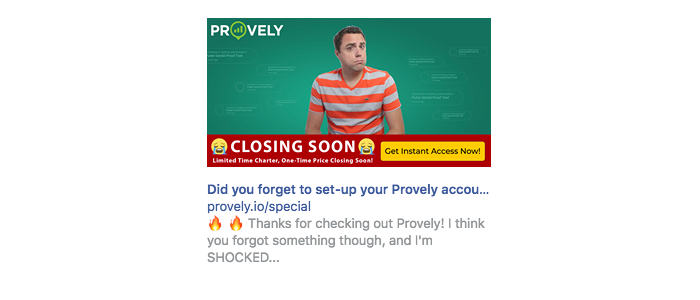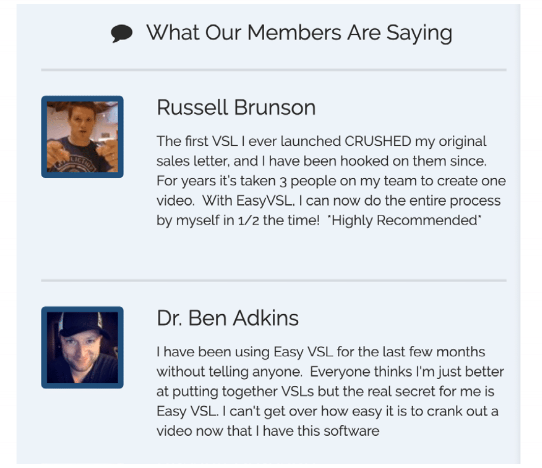TL;DR
- Effective PPC campaigns can take a business to the next level.
- An optimized checkout experience can save your custoemrs from being part of the 70% who abandon their carts.
- Automated bidding can save your from wasting your budget.
- Image hacks can increase clicks by 30%.
Across the board, PPC campaigns have become more expensive.
Millions of advertisers are on Facebook. Snapchat and Pinterest are becoming saturated. The most expensive keywords on Google Ads cost upwards of $100 per click. If a landing page is converting browsers to customers at 10% then it costs $1,000 for a single customer.
This isn’t news. PPC costs have been rising over the last few years and it’s showing no signs of stopping. In an advertising climate like this, it’s essential that your PPC campaigns pull their weight and allow you to compete while staying profitable.
In this article, you’ll learn 5 ways to drive down your costs and improve the ROI of your PPC ad campaigns.
1. Dynamically segment Facebook Audiences
Facebook is a massive platform that commands the attention of billions of users. It also has some of the most granular targeting options available. This is an asset if used correctly.
Unfortunately, many advertisers don’t understand know how to apply the nuances of customer journey based targeting when using Facebook.
It’s relatively straightforward. For example, a digital education company sells a $99 course about Photoshop editing essentials to its audience. After someone buys the initial course, there’s an upsell for a Photoshop program that costs $39 a month. A percentage of new customers buy the upsell but most pass on it for various reasons.
Dynamically segmented Facebook Audiences will allow you to show additional messages to the people who didn’t buy the upsell. You’re able to create targeted ads and clear messaging that nudges those potential customers to the sale.
This drives down your costs-per-click (CPC), impressions, and acquisition costs. The above example is just one way to segment your audience. Other ways include:
Non-purchase
We tend to focus on targeting people who’ve already purchased like in the example above but there are many opportunities to target people who didn’t purchase. Those who made it to your sales or product page but didn’t buy.
Retarget them on Facebook and address objections you know customers have before purchasing.
The example above is a retargeting ad for people who landed on a product page but didn’t end up signing up for PayKickstart. The Ad copy addresses common objections customers have.
Don’t stop at a single retargeting ad. Treat it like a funnel that systematically addresses objections. Test multiple ads and angles until you find the ones that resonate with your audience the most. Use a tool like the PayKickstart Audience Builder to do it automatically.
Demographics
Demographic information is another effective way to segment your audience. If you have products that appeal to different genders or people with specific demographic characteristics, this type of segmentation helps you create appealing ads.
Instead of showing everyone the same message, tailor ads to their specific situation. For example, you can create segmented Facebook audiences that target women under the age of 35 and show them a pair of high heels. Conversely, you can target men between the ages of 25 and 35 with ads for swim trunks made of bamboo.
Behavioural segmentation
Behavioural marketing segmentation is similar to purchase or non-purchase segmentation but encompasses so much more. When you limit segmentation to people who’ve landed on sales pages, you’re missing out on a huge opportunity to catch the attention of people who’ve not made it to that point in your funnel.
Use behavioural triggers to serve targeted ads to visitors who’ve explored specific categories of your website or those who’ve signed up for your mailing list.
For example, a group of site visitors has been browsing the Facebook advertising section of your website and reading articles, you can create a Facebook campaign to serve them ads that present a relevant product. Conversely, you can position your product as the solution to their Facebook advertising problems.
You can take this a step further by giving them a special deal that references their interaction with content related to Facebook advertising.

In the example above, a visitor landed on the website but didn’t convert into a customer or trial. They’re retargeted with a limited-time discount offer to increase the CTR and conversions.
Read: How Much Does Facebook Marketing Cost?
2. Tracking IDs for granular reporting
With the rise of countless ad platforms, there’s a constant battle to find the best ROI. Even within a single platform, there are many possible variations before finding a winning ad campaign.
On Facebook, you can use different images, headline copy, body copy, CTA buttons, and link appearance. That’s for a single ad within a single ad set. When you start thinking about all your options from the campaign level down, it can be overwhelming.
How do you keep track of the specific creative, headline copy, audience, etc. that produces the best ROI for you?
The answer is simple – tracking IDs. Even if you’re not running dozens of tests, tracking IDs are essential. They’ll help identify the ads producing the highest ROI so you can shift your budget to the winners and kill the losers.
For example, an organization that’s brand new to advertising and doesn’t know their best audience, creatives, copy, etc. would, naturally, test things. It may set up four ad sets with different demographics or interests and 2 creatives within each ad set. It would add a unique tracking ID to each ad, let it run for a while, and then check which ones were creating the most ROI.
Once it identified the winners, it would pause the underperforming ads and double down on the successful ones.
This strategy can also be applied to different ad platforms. Instead of focusing on Facebook alone, an advertiser could track ads across YouTube, Bing, Google Search, Google Display Network, etc. separately.
3. Optimized checkout experience
An optimized checkout experience is an often overlooked way to increase PPC campaign ROI. On average, 70% of people abandon carts. The most popular common reason is unexpected costs at checkout.
An optimized checkout experience can slash the cart abandonment rate by presenting the right information in an intuitive checkout flow. Not only will you increase your PPC ROI, but you’ll also reduce buyer’s remorse and improve customer satisfaction. There are a number of things you can do to optimize the checkout experience.
Product and price summary
Let people know exactly what’s contained in their order and the price upfront. If they have to hunt for information or enter their personal details before seeing it, there’s a higher chance of them abandoning the cart.
Multiple payment options
Individuals have their own preferences. Some people prefer PayPal while others prefer debit and credit cards. In certain situations, ACH payments may be best for your customers. Add multiple payment options to make the purchase easier for a larger number of customers.
Testimonials
When someone comes from a PPC campaign and is about to purchase, they may or may not have heard about your company. If not, there are a lot of objections to overcome. Testimonials on your product pages and checkout flow are important to reduce anxiety and promote your desired action.

Optional account creation
In some cases, account creation is necessary like when you’re selling a SAAS product. In other cases, like when you’re selling a digital download, account creation isn’t necessary. It can be useful, but won’t affect their ability to use the product. In those situations, make account creation optional.
Autofill
Autofill is a great way to reduce bounces, especially on mobile devices. Browsers, both mobile and desktop, save a lot of your customer’s personal information. If you set up autofill, your customer has the option of selecting the relevant information and populating the checkout form instantly.
These tweaks, when used properly, will improve the overall checkout experience and increase your conversions.
4. Automated Bidding Strategies
One of the biggest challenges with PPC advertising is bidding. You don’t want to bid too high and overspend. At the same time, you don’t want to bid too low and miss out on opportunities and customers.
It’s impossible to sit down and monitor your campaigns 24/7. You have other things to do and only work for so many hours. Get around this limitation by implementing automated bidding strategies.
With tools like Adzooma, you’re able to set up automation rules. The software will analyze your ad accounts and take the right action such as pausing your campaigns when specific conditions are met.
For example, an advertiser is running multiple campaigns to find the ones that produce the best ROI. They have a target CAC of $50 so they set up automation rules in Adzooma to pause any campaign that exceeds this CAC. For the ones that acquire customers below the $50 threshold, Adzooma can increase the bid, hold it steady, or perform another action.
This approach is ideal if you’re running a large number of campaigns and need to stop the underperforming ones quickly. It also works well when you want granular control over your campaigns but don’t have the time or resources to manage them manually.
It’ll drive up your ROI because there’s less room for human error. You don’t have to worry about forgetting to check campaigns or turning them off. If an ad isn’t performing, it gets stopped and the winners get scaled automatically.
5. Image hacks for a 30% increase in clicks
It’s been shown in multiple experiments that adding a human face to a landing page increases conversions. It’s believed to happen because another human face breaks down subconscious trust barriers we erect around ourselves.
The same thing happens in advertising. If you use faces in your ads, there’s a good chance that it’ll increase your click-through rates and conversions. Not all images which contain human faces are created equally.
A large image that shows a person in the corner won’t have the same effect as one that focuses on the face. Even the direction of the face matters. If the face is looking towards the left or the right, it draws the eyes to the object it’s looking at but may not significantly impact conversions.
When your goal is to increase conversions, evidence suggests that a face looking straight at the viewer has the highest impact. In one of our own tests, a person’s face looking straight at the camera skyrocketed click through rates.

When we took it a step further by writing our message on a brightly-coloured piece of paper, we were able to boost conversions even further. As you can see from the example, it almost looked like a selfie but it has been one of our best performing ads.
You may not be able to turn selfies into ads but you can take the learnings from this. Use faces that are looking at the camera directly and place your message on a contrasting background to draw attention.
Conclusion
PPC campaigns, when done right, can take a business to the next level. Currently, costs and competition are rising which makes it difficult for beginners and experienced PPC marketers to achieve a positive ROI.
This article has outlined 5 strategies you can adapt to your situation to improve your results and stay competitive in a changing landscape. Combine multiple strategies to find the best channels, audiences, and generate a consistent ROI.
Let me know what you’re doing to improve the ROI of your PPC campaigns in the comments and don’t forget to share.



